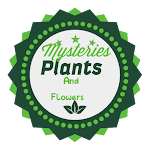While red clover might seem like a common meadow flower, it holds many secrets and fascinating characteristics that continue to intrigue scientists and herbalists alike. Here are 15 mysteries of the red clover plant:
1. The Shamrock's Secret: The iconic three-leaf clover, often associated with Ireland and good luck, is actually a rare mutation of the red clover plant. The true clover symbol has only two leaves, and the three-leaf version is said to occur in just 1 in 10,000 plants!
2. Nitrogen-Fixing Wizard: Red clover harbors special bacteria in its root nodules that can capture nitrogen from the air and convert it into a usable form for the plant. This remarkable ability enriches the soil, benefiting not only the clover but also other plants growing nearby.
3. Bee Magnet Extraordinaire: The vibrant red-pink flower heads of red clover are a beacon for bees and other pollinators. The flowers produce copious amounts of nectar, making them an essential food source for these crucial insects.
4. Healing Powers Unraveling: Traditionally, red clover has been used for centuries to address various ailments like menopausal symptoms, coughs, and skin issues. While some studies suggest potential benefits, more research is needed to fully understand its medicinal properties.
5. Edible Delights: Believe it or not, both the flowers and leaves of red clover are edible! They have a mild, slightly sweet, and grassy flavor and can be added to salads, teas, and even incorporated into baking.
6. Color-Shifting Chameleon: Did you know that the red clover's flower heads can change color slightly throughout the day? They often appear brighter in the morning light and become slightly paler as the day progresses.
7. Clover Power in Medicine: Interestingly, red clover extract is being investigated for its potential role in treating certain cancers. While initial results are promising, further studies are needed to confirm its efficacy and safety for this purpose.
8. Climate Change Contender: Red clover's deep taproot system makes it surprisingly resilient to drought conditions. This characteristic could prove valuable in a world facing increasing climate change challenges.
9. A Feast for the Senses: Not only are red clover flowers visually appealing, but they also emit a faint, sweet fragrance that attracts pollinators and adds a delightful touch to meadows and gardens.
10. Honeybee Haven: Red clover fields are havens for honeybees, contributing significantly to honey production. In fact, honey derived from red clover blossoms is known for its delicate flavor and light color.
11. Clover Companionship: Red clover often forms symbiotic relationships with mycorrhizal fungi, which help the plant acquire nutrients from the soil in exchange for sugars produced by the clover. This mutually beneficial partnership contributes to the plant's overall health and vigor.
12. Clover Patch Biodiversity: Red clover meadows are teeming with life, providing habitat for a wide variety of insects, birds, and small mammals. This biodiversity contributes to a healthy ecosystem and supports numerous other species.
13. Mysterious Markings: The characteristic pale crescent markings on the leaflets of red clover remain a bit of an enigma. Scientists believe they may serve as a visual cue for pollinators or help protect the leaves from herbivores, but the exact function remains under investigation.
14. Clover in Folklore and Mythology: Red clover has long been associated with luck, magic, and protection in various cultures. It features prominently in Irish folklore and is often linked to fairies and leprechauns.
15. The Future of Red Clover: With its multifaceted benefits for agriculture, the environment, and even human health, red clover continues to be a subject of ongoing research and exploration. Its potential applications in sustainable farming, medicine, and ecological restoration are vast, making it a plant with exciting possibilities for the future.
So, the next time you see a patch of red clover, remember that it's more than just a pretty flower. It's a complex and fascinating plant with hidden secrets waiting to be discovered!


